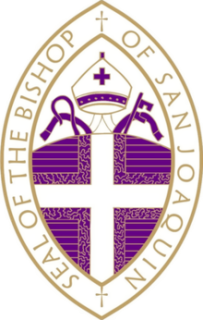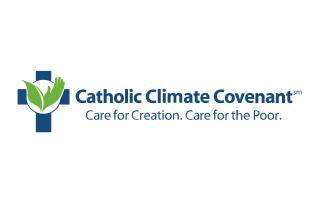Advertisement
The Rev. Fletcher Harper, executive director of GreenFaith, an interfaith environmental coalition, speaks with the urgency of a man shouting as the house burns. Politicians, governments, corporations—all are moving too slowly on climate change and need to hear the alarm. Who better, he says, to make the noise than people of faith?
“What we have to bring is a sense of morally based defiance,” says Harper, an Episcopal priest. “Destroying the planet is against our religions. Religious communities are uniquely positioned to do this, to bring the moral message.”
How are some of the world’s many faith traditions responding to the climate crisis? Inspired by their respective traditions, many religious communities are working to shape a more sustainable way of life and protect those most vulnerable to the impacts of a warming planet.
One can think of these climate activists as volunteers in a global park cleanup, says Cassandra Carmichael, executive director of the National Religious Partnership for the Environment, each pitching in, each finding some action that “resonates for their community . . . their approaches all complement each other, but they do differ.”
This story offers a snapshot—far from comprehensive—of this faithful climate justice work. It would be impossible to cover all faiths, let alone all voices within them.
BLACK DENOMINATIONS: GREEN THE CHURCH

And God said, “Let there be light,” and there was light.
Genesis 1:3
“What does it mean to let there be light?” asks the Rev. Dr. Ambrose Carroll Sr., who founded Green the Church, a national organization that’s marshaling the efforts of Black churches of all denominations against environmental degradation and climate change. “In a lot of ways, we are where we are because people have been standing in the way of others’ lights.”
Green the Church intends to “wake up the sleeping giant that is the Black church*,” says Carroll, pastor of the Church by the Side of the Road in Berkeley, California. And their commitment to environmental justice is critical as climate change poses a disproportionate risk to Black people.
For example, more than half of Black people in the United States live in the South, which is particularly vulnerable to violent storms and floods, and they are more likely to live in areas with high levels of pollution that result in serious health issues. Black people are projected to continue to face higher impacts of climate change, including the incidence of childhood asthma and extreme-temperature-related deaths.
Green the Church’s website includes stories of clergy and laypeople trying to make a difference: developing vegetable gardens to address the food deserts and general insecurity that can result from climate change, working on legislation to promote renewable energy, and shifting churches to more environmentally sustainable practices. Carroll acknowledges that “environmentalism is not our language in the Black church, but our language is revival. Anything old, decayed can be made new again.”
*According to a Pew Research Center study, the term “the Black church” is understood to include U.S. denominations with Black clergy that minister predominantly to Black people. A majority of African Americans identify as Protestant with a number of religious affiliations, including the National Baptist Convention USA, Church of God in Christ, and the African Methodist Episcopal Church.
BUDDHISM: ONE EARTH SANGHA

A monk once asked the Zen master Yunmen, “What is the work of the Buddha’s whole life?” Yunmen replied, “An appropriate response.”
What is the appropriate response to the overwhelming threat of climate change? Helplessness? Despair? Grief? Anxiety? A desire to do, well . . . something?
It could be all of those, says Kristin Barker, director of One Earth Sangha, a Buddhist organization she co-founded in 2013 that focuses on helping people cultivate their sense of well-being even while facing this mounting danger, and, if they wish, acting against it. The effort draws on centuries of Buddhist teaching and practice, a tradition that values turning toward, not away, from suffering, and recognizing that suffering is the fundamental human condition.
Looked at in one light, “the world has always been burning, in one way or another . . . our heartbreak is not new,” says Lama Willa Blythe Baker, a teacher featured on the One Earth Sangha website. Barker says it is crucial for people to learn how to cultivate what Buddhist scholar and environmental activist Joanna Macy calls “active hope,” an optimistic energy focused on the present, not the future.
Visitors to the One Earth Sangha website can find material about Buddhist tradition and practice, online discussions and training sessions with Buddhist teachers, and strategies for becoming an “EcoSattva,” a turn on “bodhisattva,” a person on the path to ultimate enlightenment. There are also links to ways to take immediate, practical steps to fight climate change and environmental degradation.
EPISCOPAL CHURCH: THE SAN JOAQUIN PROJECT

The earth is the Lord’s, and the fulness thereof;
The world, and they that dwell therein.
Psalms 24:1
The Episcopal Diocese of San Joaquin in California ranges from the southern oil fields of Taft, north to the wine country of Lodi, encompassing vast Central Valley farms. Sunshine rules most days, nurturing almonds, avocados, and other crops—including solar power.
By the end of this year, the diocese of nineteen faith communities and a conference center is expected to complete a three-year project and run almost entirely on solar energy installed on
diocesan property. Many churches have solar arrays, but the San Joaquin project stands out as an effort across a diocese.
“It feels good, because we did it together,” says Bishop David Rice, who led the project soon after being named vice chair of an Episcopal task force on environmental stewardship and creation care. “That’s who we want to be as a diocese.”
It’s in step with Episcopal Church hierarchy, which since 1988 has registered mounting concern about climate change, making policy of the notion from Psalms that the Earth and all it holds belongs to God. The “Covenant to Care of Creation,” issued in 2020, recommends how the commitment to deal with climate change can be carried out by the individual parishioner, congregation, diocese, and the entire Episcopal Church. “This has to be serious work, serious gospel work,” Rice says. “I think it has everything to do with why we’re in church.”
EVANGELICAL CHRISTIANITY: THE EVANGELICAL ENVIRONMENTAL NETWORK

Through his power all things were made—things in heaven and on earth, things seen and unseen, all powers, authorities, lords, and rulers. All things were made through Christ and for Christ.
Colossians 1:16
The Evangelical Environmental Network, founded in 1993, ties environmental advocacy to a “pro-life,” family-friendly message, explains Rev. Mitchell C. Hescox, the network’s president and CEO. It grounds its work in the value of "creation care," a deep sense of joy and contentment that it is part of loving God. Their “Pro-Life Clean Energy Campaign” focuses on curbing pollution from methane and mercury, environmental hazards because of their danger to pregnant people and their unborn children.
An online petition backing the Biden Administration’s half-trillion-dollar climate plan calls for action to “secure a safe future for our children and God’s creation and revitalize our communities with family-sustaining clean jobs.”
In the last few years, Hescox has seen views shift among religious conservatives who might not seem the most receptive audience for a pitch on environmental protection. “If you connect with people on their own values,” he says, you can get the message across. He says he’s been working to “help people understand that caring for God’s creation is really a matter of human life.”
ISLAM: THE GREEN INITATIVE

“As for the earth, We have spread it out, set firm mountains on it, and made everything grow there in due balance.”
The Qur’an, Al Hijr 15:19, a verse commonly used by Muslim scholars when discussing the concept of “mizan,” or “balance.”
The Prophet Muhammad set an example of walking “softly” on the earth, using resources sparingly, and exercising personal restraint, says Imam Saffet A. Catovic of the Islamic Society of North America (ISNA).
Since it launched its Green Initiative in 2014—months before Islamic scholars in Istanbul issued the “Islamic Declaration on Global Climate Change”—the Islamic Society has been helping people figure out how they can make a difference, recruiting activists, and framing the subject in terms that have particular meaning in Islamic tradition.
A continuing Green Ramadan campaign, for instance, encourages those engaging in the annual observance to reduce food waste, recycle materials, and conserve energy and water. The Green Masjid Project has been encouraging mosques to convert to alternative energy sources and adopt other environmentally friendly practices.
Catovic, a founding member of the Green Initiative and now head of ISNA Interfaith and Community Alliances, says the effort to enlist people to act against climate change faces particular challenges in the Muslim world. For those living where oil is an important industry—Islam is the majority religion in ten of the world’s top twenty oil-producing countries—the campaign against fossil fuels is a very tough sell, Catovic says.
ISNA has been pressing the case for fossil fuel disinvestment, even seeking support for an agreement that would group fossil fuels along with industries producing pork, alcohol, and weapons as prohibited investments for Muslims. The organization is also pressing for an anti-fossil fuel element in a statement called “Al-Mizan: A Covenant for the Earth” now being drafted by a group of Islamic scholars, environmentalists, and educators under the auspices of the United Nations.
JUDAISM: THE COALITION ON THE ENVIRONMENT AND JEWISH LIFE

Tikkun olam: A Hebrew phrase found in the Mishnah, a body of rabbinic writing compiled in the third century, bearing meanings both mystical and practical. The expression can connote an obligation to “repair” what is broken in the world.
The Coalition on the Environment and Jewish Life (COEJL), which includes representatives of Conservative, Reform, and Reconstructionist branches of Judaism, but not Orthodox, is pursuing its version of tikkun olam by making the Florida Keys National Marine Sanctuary one of its main projects. It includes the endangered Florida Reef, the third-largest coral barrier reef in the world and the only one in North America.
Reefs are expected to be in increasing danger in the next twenty to thirty years due to rising water temperatures. The U.S. National Oceanic and Atmospheric Administration (NOAA) is working with a number of federal and state agencies, as well as business groups whose livelihoods depend on sanctuary waters.
Rabbi Daniel Swartz, COEJL’s executive director, says the coalition sees this as a chance to introduce a religious voice in a sanctuary “Restoration Blueprint” now being drafted under the auspices of NOAA.
“I am the faith liaison to this group,” says Swartz. “Part of my job is to have outreach to faith communities” and to introduce a “language of ethics” into a process fraught with competing commercial and political interests.
Swartz also brought COEJL’s voice to months of work that culminated in 2021, when a group of some forty religious leaders and scientists presented an appeal for action to the United Nations Climate Change Conference in Glasgow. Among other things, the appeal called on all governments to limit global average temperature rise to 1.5°C above pre-industrial levels, and on the most affluent countries to provide robust support for poorer nations trying to adapt to climate change.
ROMAN CATHOLICISM: THE CATHOLIC CLIMATE COVENANT

Father, we praise you with all your creatures.
They came forth from your all-powerful hand;
they are yours, filled with your presence and your
tender love.
From Laudato Si’, encyclical issued by Pope Francis,
A Christian prayer in union with creation, subtitled “On Care for Our Common Home”
The Pope’s 2015 encyclical demanding action to stem environmental degradation and climate change established an “action platform” for Catholics, says Dan Misleh, founder of the Catholic Climate Covenant. Launched in 2006 with the help of the United States Conference of Catholic Bishops, the Covenant has “become a hub of action in the United States,” Misleh said.
Some seventy million people identify as Catholic in the United States, about 22 percent of the population. Under the auspices of its Catholic Energies initiative, the Covenant is offering parishes and other Catholic organizations help in shifting to more efficient use of electricity, including solar power.
This past spring, approximately 800 Catholic emissaries mobilized by the Covenant visited U.S. senators in Washington, D.C. According to the National Catholic Reporter, they were searching for votes for the portion of the Biden Administration’s plan—then known as “Build Back Better”—that at the time included spending over the next ten years on alternative energy incentives and curbing carbon emissions. The legislation—seen as the federal government’s largest single investment in climate change mitigation—was ultimately adopted in August as the Inflation Reduction Act of 2022, including $370 billion on energy security and projects related to curbing climate change. The bill was predicted to reduce carbon emissions by 40 percent by 2030.
Meanwhile, seventeen “ambassadors” stationed across the country sustain a continuing effort to engage small groups in talking about the faith’s teaching on environmental protection, about climate change, and what Catholics can do about it. This is one area where Misleh sees progress; climate change skepticism seems to be waning, even compared to seven or eight years ago, he says.
UNITARIAN UNIVERSALISM: CLIMATE JUSTICE IS A PRIORITY
Unitarian Universalist congregations affirm and promote . . . respect for the interdependent web of all existence of which we are a part.
– The Seventh Principle of Unitarian Universalism
When President Joe Biden in early June announced that he would invoke the Defense Production Act to spur domestic companies to produce clean energy technologies, it was a moment to relish for Unitarian Universalists and others who have taken part in the Build Back Fossil Free movement.
The months-long campaign of letters, petitions, and street protest— including mass arrests in Washington, D.C., last October—called for the Biden Administration todeclare a national climate emergency and immediately cease new fossil fuel projects.
Climate justice is a priority for UUs. Most congregations, a number of UU organizations, and UUA staff groups—including the UUA Office at the United Nations, the UU Ministry for Earth (UUMFE), UUs for a Just Economic Community, UUs for Social Justice, Side With Love, and the UU Service Committee,which recently released a joint statement publicly committing to respond to climate-forced displacement—are working on a variety of climate justice initiatives.
In 2021, a group led by Paula Cole Jones and Dr. Rashid Shaikh launched the UU BIPOC Caucus on Climate Justice, working with the UUMFE, tofocus on the intersections of racial and climate injustices. And the UUA applies socially responsible investing and shareholder activism approaches in its financial investments.
“Our faith as Unitarian Universalists compels us to show up for climate justice—including with communities of color who are disproportionately impacted—so that our work helps sustain the Earth and all beings can thrive,” says UUA President Susan Frederick-Gray.
UUs around the country are also involved at the national level through direct actions, state action networks, advocacy, and more. They’re also working closer to home, on their buildings and in their communities.
Since 1989, the UUA’s Green Sanctuary Program—and its latest iteration,Green Sanctuary 2030—has helped motivate congregations to green their buildings and communities. Approximately 30 percent of UU congregations are Green Sanctuary certified, and many more are seeking certification (with others seeking recertification) under the new program, which includes a greater emphasis on how systemic racism is inextricably bound to climate degradation and injustice.
In Athens, Georgia, the Unitarian Universalist Fellowship installed photovoltaic panels on the sanctuary roof and took other steps to make the building more energy efficient, all in pursuit of net-zero carbon emissions. Congregation member Dan Everett says the net-zero goal will still require carbon offsets, payments which are to be made into a fund for weatherizing the homes of low-income residents.
In Corvallis, Oregon, a Unitarian Universalist Fellowship took one step in 2021, getting a $10,000 city loan to make its building more energy efficient. Then another, hosting a series of online presentations on how to cut carbon emissions.
Across Florida, Unitarian Universalist Justice Florida pursues a number of projects meant to help communities adapt to the effects of climate change, including floods. Also in Florida, starting with two solar power evangelists at First Unitarian Church of Orlando, Mary Dipboye and Michael Cohen, word has spread across the state as one UU congregation after another has signed up as a sponsor or partner withSolar United Neighbors, a national advocacy organization active in thirteen states. About a quarter of the forty-five UU congregations in Florida have signed up, including two that have installed solar on their sanctuaries.
In Durham, North Carolina, Eno River Unitarian Universalist Fellowship has engaged in several efforts, including solar-powering two of their three buildings, applying for a state grant to build four electric car charging ports, and supporting a local farmer on sustainable agriculture.
In Indianapolis, members of All Souls Unitarian Universalist Church are installing solar arrays on their own homes while pressuring the state legislature to support solar power and urging Indianapolis Power and Light to shift to renewable energy sources.
Cedar Lane UU Church is a green sanctuary in Bethesda, Maryland,and its Environmental Justice Ministry Committee is very active in lobbying Congress. Its Senior Ministry, Abhy Janamanchi who took part in the Build Back Fossil Free protest in Washington, D.C., in October, said we are in a climate emergency, and “the need for faith communities to show up together and be engaged in the work of bold transformation, to me, is more needed than ever.”
FAITH AS A SOURCE OF STRENGTH
Rev. Harper, executive director of the GreenFaith interfaith environmental coalition, calls for a rising from the “meditation cushions, the prayer rugs, out from the pews” and into the sort of collective action taken by people of faith who powered civil right movements in the United States and South Africa.
“It’s not a time when incremental, modest levels of change are going to work,” says Harper.“It’s about trauma, it’s about nature being destroyed needlessly.”
Others doing faith-based environmental work note the role that faith can play as an abiding source of courage amid what can seem an overpowering challenge.
Rabbi Swartz of the Coalition on the Environment and Jewish Life, says, “We have to serve as field chaplains to people who are working on this, who are exhausted and in despair.”
Rev. Melanie Mullen, who serves as the Episcopal Church director of reconciliation, justice, and creation care, recalls how she saw that during the United Nations Climate Change Conference in Madrid in 2019. She met a scientist who, after delivering a talk, stepped into the women’s room and cried, overwhelmed with worry for the world in general and her daughter in particular.
When the scientist asked Mullen how she could remain hopeful, Mullen talked about her faith as her source of strength.
“If we don’t have the divine hope,” she says, “nobody can.”